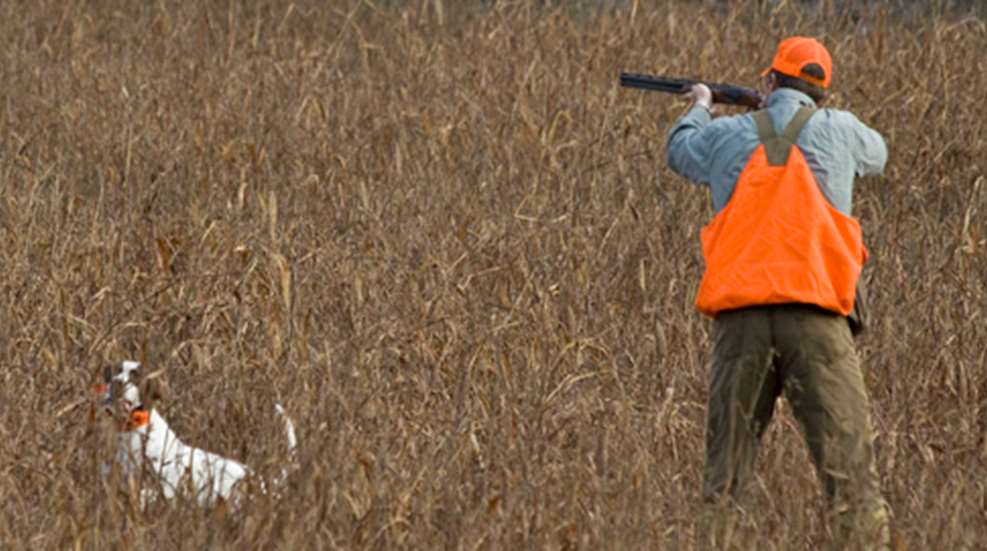
So, you’ve been invited on a bird hunt. All you know is that bird hunters seem to wear lots of orange, talk constantly about their dogs and that a shotgun is appropriate.
There’s a little more to it than that, but follow these 10 rules (to call them commandments might be presumptuous) and you may actually get invited back.
1. When in Doubt, Don’t Shoot
No one minds a hunter who can’t hit a bird, but an unsafe hunter is totally unacceptable. Upland bird hunting puts hunters in closer proximity to one another than most other pursuits, and bad things can happen fast; it is absolutely crucial that you exercise safe gun handling and sound judgment in this dynamic environment. The No. 1 principle to adhere to is: If you have any doubt as to the angle of the shot, the location of another hunter or the dog or you just don’t feel right about it—hold your fire. There will be more birds—no human or canine’s life is worth risking over a bad decision.
2. Don’t Give Commands to Another Man’s Dog
The dogs are often the shining stars of bird hunting but the unsung heroes are the guys who spent months training them. Ever see a painting or a sculpture of a dog handler? Give them the respect they are due and don’t confuse the canines—if it’s not your dog, don’t tell it what to do.
3. Shoot on Blue Sky
When hunting “flushing” birds such as quail, woodcock, snipe, partridge, grouse and pheasant, let the bird get above the undergrowth into “blue sky” before you shoot. In other words, make sure that the direction of your shot is safely above the heads of dogs and hunters. This is especially important if you are hunting with “blockers” as in pheasant hunting. Don’t be afraid to yell “low bird” if you feel the shot is unsafe.
4. Pick Up Empties
Your host has spent countless hours and dollars creating bird habitat, the least that you can do is pick up your empty shotgun shells after you shoot so the ground doesn’t become littered with hulls.
5. Maintain a Parallel Line
Shooters and guides should maintain a constant parallel line on flushing hunts, this allows each shooter the widest possible latitude to shoot safely. Adjust your walking pace as needed to ensure that the line is straight, especially when approaching a point. If your path takes you over uneven ground, be sure that everyone knows the location of other hunters that may be hidden by terrain or brush.
6. Shoot Your Zone
Each hunter has a slightly overlapping “zone” in which he or she can safely shoot. This zone should take into account other hunters, guides, dogs, vehicles, etc. Visualize your zone before a shot presents itself so you know where potential danger areas will be.
7. Don’t Be a Game Hog
Nobody likes the guy who shoots more than his share. When you’ve had a few good shots, be gracious and let others get the chance. You’ll make more friends demonstrating your restraint than your marksmanship.
8. Don’t Make Excuses
Everyone misses, but the hunter who constantly makes excuses gets on everyone’s nerves. “The Sun was in my eyes” or “I have the wrong choke in” or “These quail don’t fly like wild birds” or “My Purdey is in the shop”—we’ve heard it all before, we don’t care.
9. Use the Right Gauge
I’m not suggesting that you run out and buy a new shotgun, but there is an expectation in bird hunting of matching the bore and shot size to the game. Example: the hunter who shows up to a “plantation style” quail hunt with a 12-gauge may be viewed with a bit of a raised eyebrow. If you don’t have the right gun for the hunt, see if you can borrow or rent a suitable arm. While we’re on the topic of guns, break-open over-unders, side-by-sides and single-shots are preferred to repeaters for many styles of upland hunting because they can be carried safely with the actions open for all to see.
10. Dress the Part
An upland hunt doesn’t mean that you need to look like a walking Orvis catalog, but proper attire does require some thought. Camo is fine for hunting dove and ducks, but if you’re after birds like pheasant or quail, you can’t go wrong with earth tones mixed with a healthy splattering of blaze orange.
Follow these steps, be safe and enjoy yourself —you’re in for a treat.




































